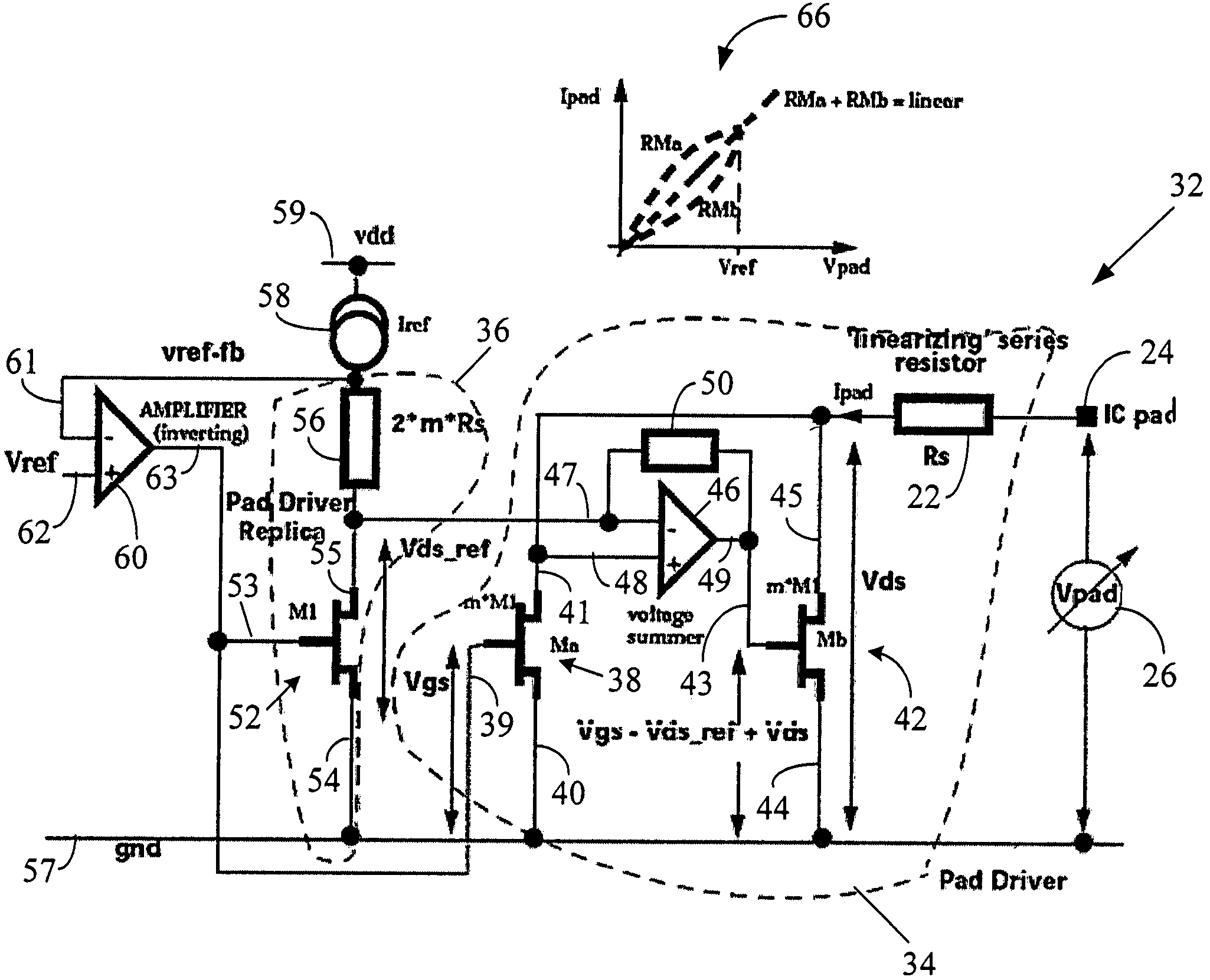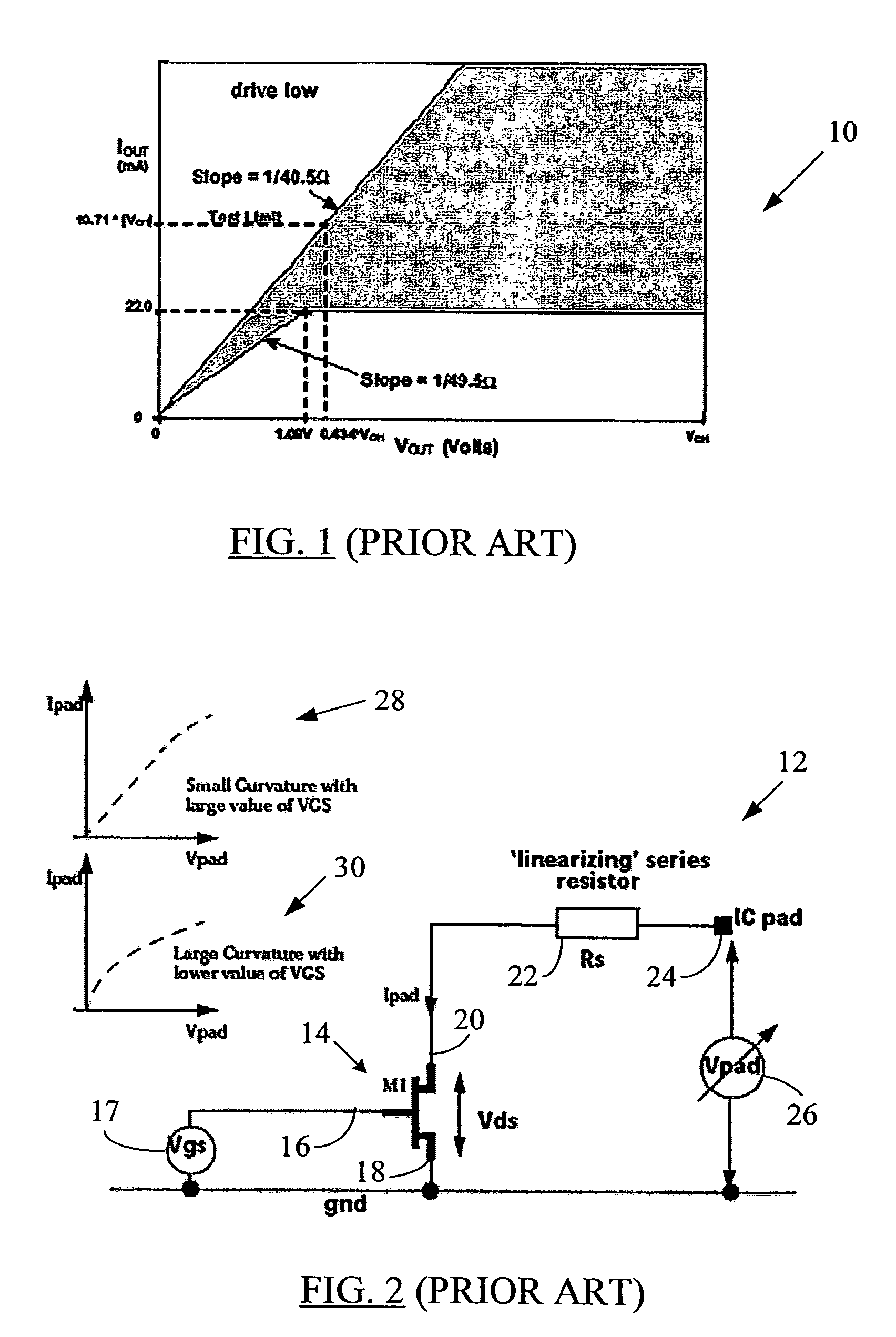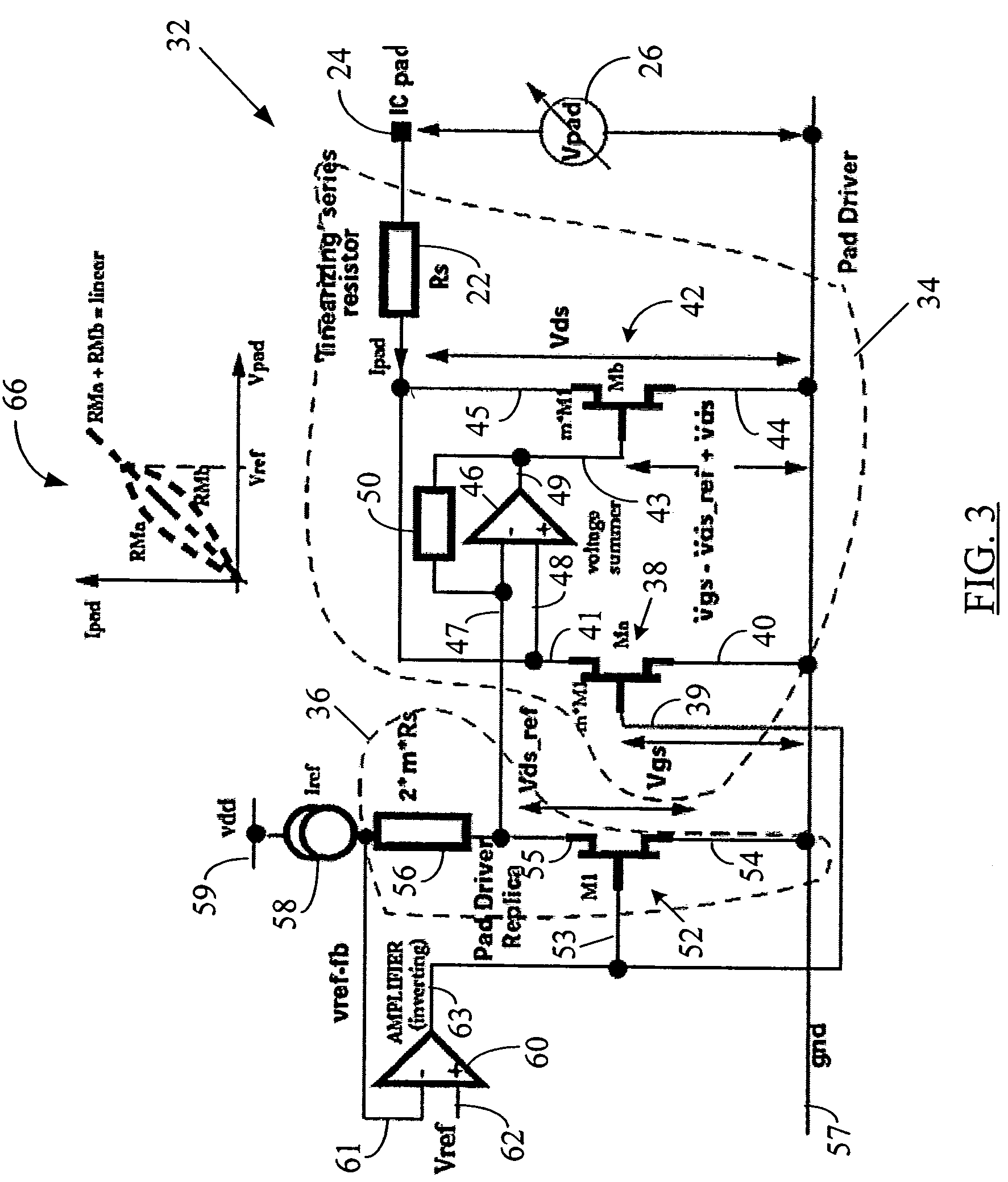MOS linear region impedance curvature correction
a technology of linear region and impedance curvature, which is applied in the direction of amplifiers with field-effect devices, pulse techniques, baseband system details, etc., can solve the problems of increasing system cost and component count, not being able to meet tight impedance specifications, and many non-analog cmos fabrication processes that do not have precision resistors available, etc. , to achieve the effect of tight impedance control, increased output impedance, and greater linearity
- Summary
- Abstract
- Description
- Claims
- Application Information
AI Technical Summary
Benefits of technology
Problems solved by technology
Method used
Image
Examples
Embodiment Construction
[0049]Reference will now be made in detail to certain embodiments of the present disclosure, examples of which are illustrated in the accompanying drawings. It is to be understood that the figures and descriptions of the present disclosure included herein illustrate and describe elements that are of particular relevance to the present disclosure, while eliminating, for the sake of clarity, other elements found in typical pad drivers or buffers. It is noted at the outset that the terms “connected”, “coupled,”“connecting,”“electrically connected,” etc., are used interchangeably herein to generally refer to the condition of being electrically connected. Further, a terminal is considered “held” at a specific potential when appropriate voltage (e.g., ground potential, reference voltage, supply voltage, etc.) is available at that terminal. The terms “supply” or “provide” are also used interchangeably to refer to electrically supplying or providing a voltage or current to a circuit element...
PUM
 Login to View More
Login to View More Abstract
Description
Claims
Application Information
 Login to View More
Login to View More - R&D
- Intellectual Property
- Life Sciences
- Materials
- Tech Scout
- Unparalleled Data Quality
- Higher Quality Content
- 60% Fewer Hallucinations
Browse by: Latest US Patents, China's latest patents, Technical Efficacy Thesaurus, Application Domain, Technology Topic, Popular Technical Reports.
© 2025 PatSnap. All rights reserved.Legal|Privacy policy|Modern Slavery Act Transparency Statement|Sitemap|About US| Contact US: help@patsnap.com



